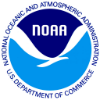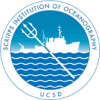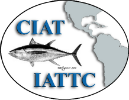Good Practices in Stock Assessment Modeling
One ongoing Program at CAPAM is the Good Practices in Stock Assessment Modeling, which includes a number of Projects that address the theories, estimators, and assumptions used in contemporary stock assessment model development, e.g., selectivity, catchability, growth, natural mortality, spawning stock-recruitment relationship, covariates, spatial structure, data/likelihoods weighting, multispecies and ecosystem considerations, and diagnostics.
Education and Trainning
CAPAM Staff has collaborated and provided guidance in several research projects to fishery science students and early career scientists. For the 2013 World Conference WCSAM this work involving 11 graduate students from the University of Washington, Simon Fraser University, University of Florida, and University of British Columbia. This project provided students hands-on experience with stock assessment development and resulted in four presentations at the WCSAM and four publications. Further similar collaborations between CAPAM Staff and students and early career fishery scientists resulted in additional presentations during CAPAM workshops and related publications.
CAPAM Staff has collaborated with CAPAM Staff in collaboration with scientists from NOAA and other institutions are organizing short-courses on Fisheries Stock Assessment. For more information visit our Education and Trainning page.
White Seabass Stock Assessment
CAPAM Staff conducted a Stock Assessment for White Seabass (Atractoscion nobilis). The white seabass is a nearshore finfish species found in the coastal waters of California and Baja California, and to a much lesser extent, along the coast of Oregon and Washington. The species supports important California recreational and commercial fisheries, which are managed through State regulations. CAPAM staff used the fisheries stock assessment modeling platform Stock Synthesis (SS) to assess the California population of White Seabass. All available information on population dynamics, movement patterns, life history, age, growth, maturity, fecundity, range, catch history, catch per unit effort (CPUE) time series, electronic tagging data, hatchery data and survey data was evaluated to determine which were appropriate for inclusion in the assessment. This project was led by Dr. Juan Valero and Lynn Waterhouse. An independent peer-review of the stock assessment work took place in La Jolla during May 2 and 3, 2016.


